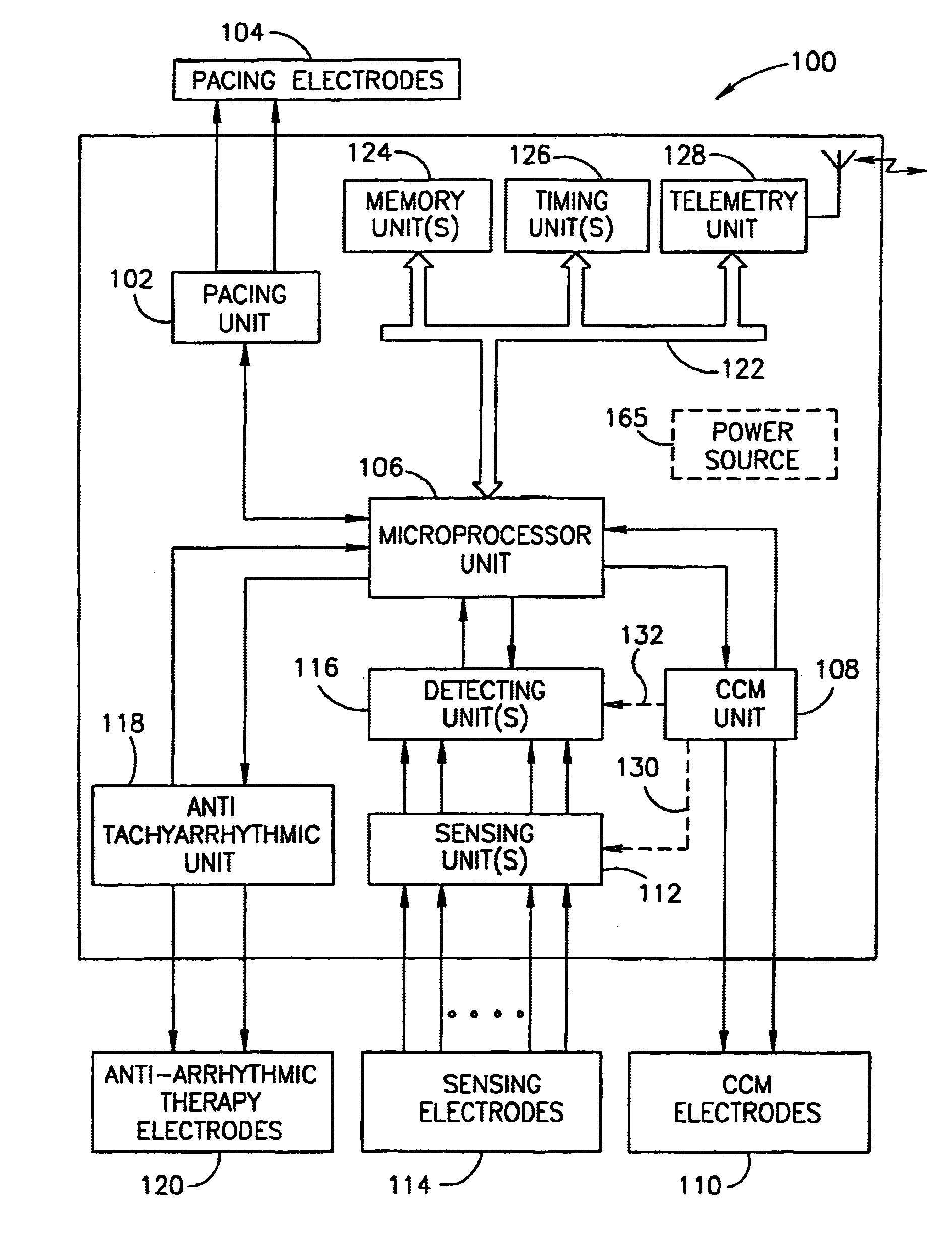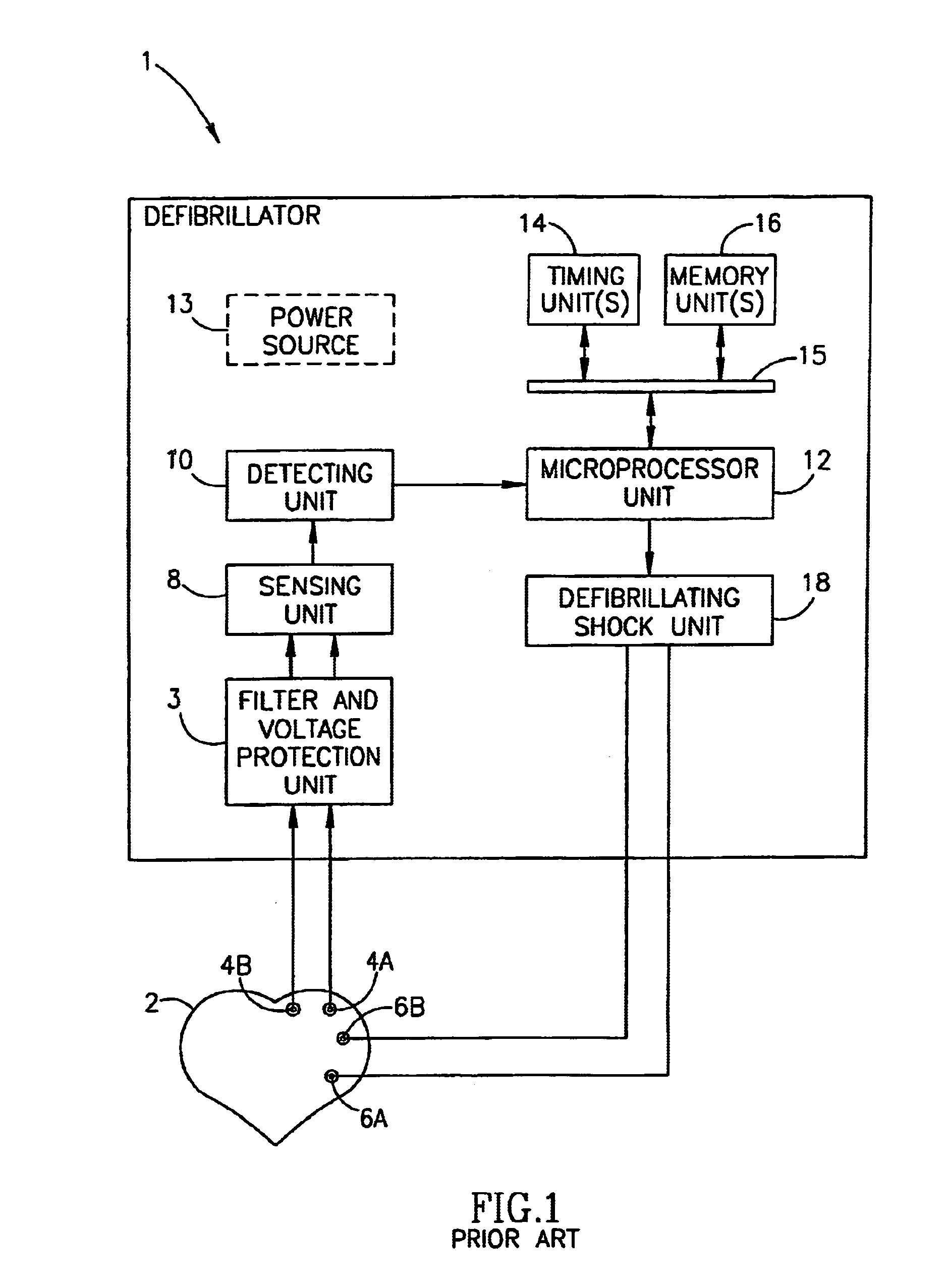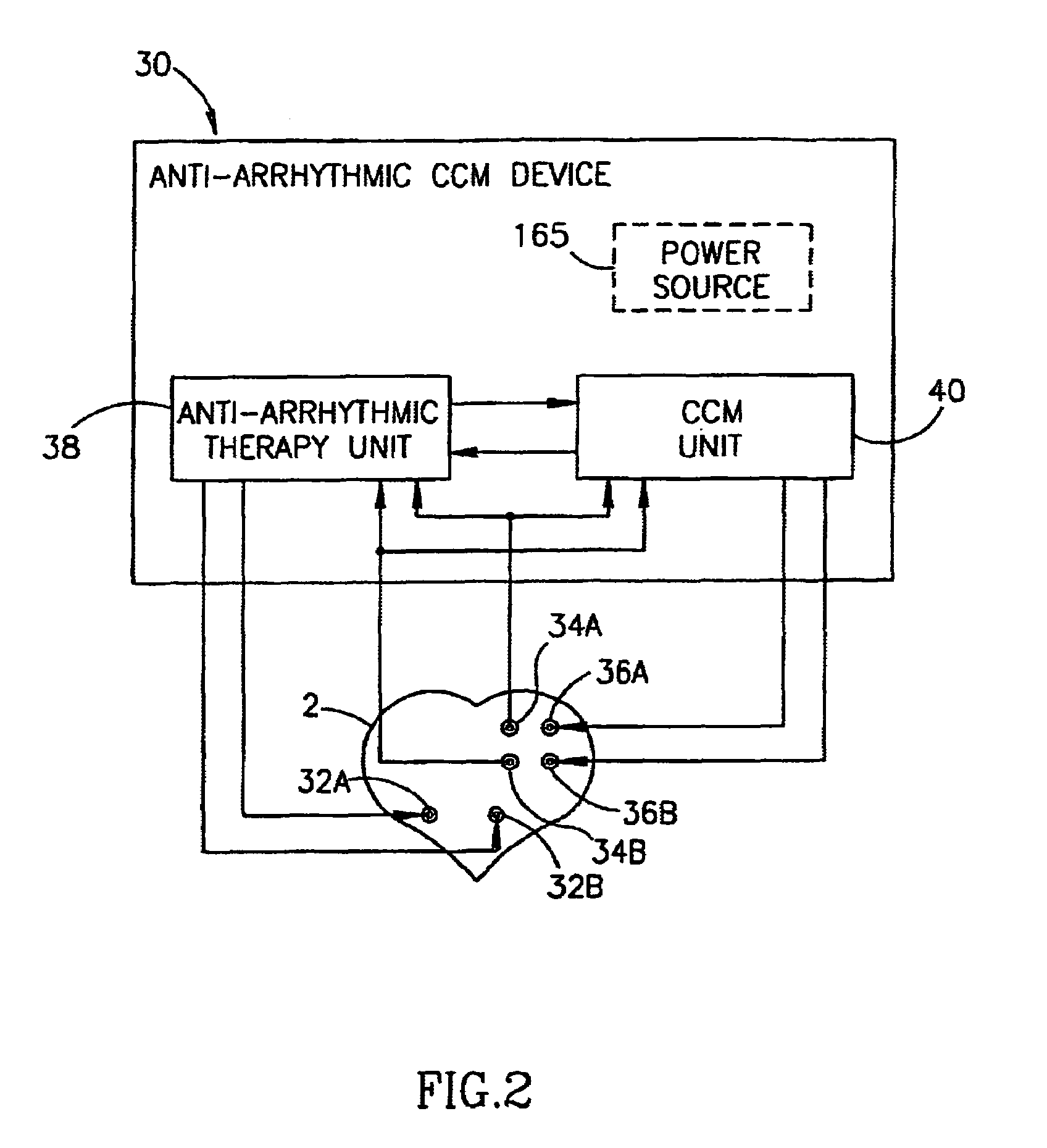Device for cardiac therapy
a technology for cardiac therapy and devices, applied in the field of cardiac therapy devices, can solve the problems of cardiac tachy-arrhythmia detection and/or classification, cardiac tachy-arrhythmias being delivered in unnecessary and potentially dangerous defibrillating shock therapy, and modulating myocardial contractility, etc., to reduce the prevalence of arrhythmic episodes
- Summary
- Abstract
- Description
- Claims
- Application Information
AI Technical Summary
Benefits of technology
Problems solved by technology
Method used
Image
Examples
Embodiment Construction
[0065]The following terms are used throughout the application:
[0066]
TermDefinitionACAlternating CurrentAGCAutomatic Gain ControlAICDAutomatic Internal Cardioverter DefibrillatorATCAutomatic Threshold ControlATPAnti-Tachycardia PacingCCMCardiac Contractility ModulatingCHFCongestive Heart FailureCSCoronary SinusDCDirect CurrentECDExternal Cardiac DefibrillatorECGElectro CardiogramETCExcitable Tissue ControlGCVGreat Cardiac VeinICDInternal Cardiac DefibrillatorIEGMIntracardiac ElectrogramLUTLook Up TableLVLeft VentricleLVPLeft Ventricular PressurePVCPremature Ventricular contractionRARight AtriumRVRight VentricleSVTSupra Ventricular TachycardiaVFVentricular FibrillationEB'sEctopic BeatsVTVentricular Tachycardia
[0067]Reference is now made to FIG. 1 which is a schematic functional block diagram illustrating a prior art defibrillator device.
[0068]The defibrillator device 1 includes a filter and voltage protection unit 3 which is suitably electrically connected to sensing electrodes 4A and...
PUM
 Login to View More
Login to View More Abstract
Description
Claims
Application Information
 Login to View More
Login to View More - R&D
- Intellectual Property
- Life Sciences
- Materials
- Tech Scout
- Unparalleled Data Quality
- Higher Quality Content
- 60% Fewer Hallucinations
Browse by: Latest US Patents, China's latest patents, Technical Efficacy Thesaurus, Application Domain, Technology Topic, Popular Technical Reports.
© 2025 PatSnap. All rights reserved.Legal|Privacy policy|Modern Slavery Act Transparency Statement|Sitemap|About US| Contact US: help@patsnap.com



